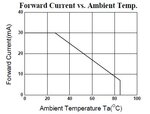d123
Advanced Member level 5
Hi,
The LM335 has an adjust pin and you can calibrate out any error with a trimpot. The LM35DZ has no adjust pin and has an error range of up to 2ºC. From the schematic, does it look feasible to improve on any error by adding a trimpot from the Vout pin to ground, maybe set to a similar ratio as R2 and 0.125 R2? Would this ad hoc adjustment just scale with temperature rise to add additional error, creating a greater deviation from the original device slope, like with op amp gain? A resistor to ground to subtract the error +6 to +20mV (+0.6 to +2ºC) would scale with temperature, I think. Placing a small resistor from the ground pin to circuit ground to add a few mV if the error was -6mV to -20mV would also be unhelpful for the same reasons, would it?

Thanks.
The LM335 has an adjust pin and you can calibrate out any error with a trimpot. The LM35DZ has no adjust pin and has an error range of up to 2ºC. From the schematic, does it look feasible to improve on any error by adding a trimpot from the Vout pin to ground, maybe set to a similar ratio as R2 and 0.125 R2? Would this ad hoc adjustment just scale with temperature rise to add additional error, creating a greater deviation from the original device slope, like with op amp gain? A resistor to ground to subtract the error +6 to +20mV (+0.6 to +2ºC) would scale with temperature, I think. Placing a small resistor from the ground pin to circuit ground to add a few mV if the error was -6mV to -20mV would also be unhelpful for the same reasons, would it?
Thanks.

